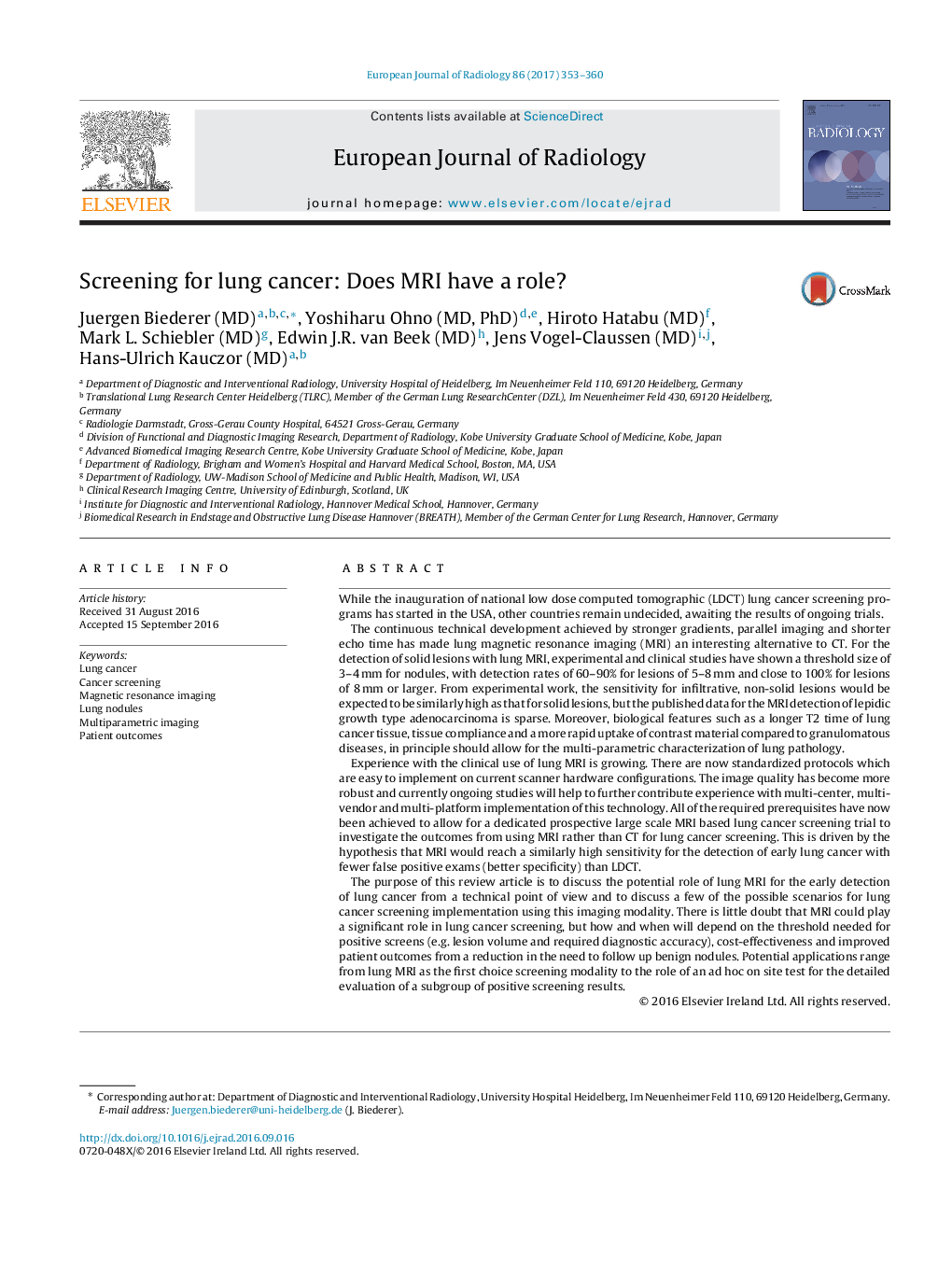| Article ID | Journal | Published Year | Pages | File Type |
|---|---|---|---|---|
| 5726165 | European Journal of Radiology | 2017 | 8 Pages |
â¢From a technical point of view, the feasibility of using MRI for lung cancer screening is evident.â¢Experience with the clinical use of lung MRI is growing, standardized protocols are available.â¢If lung cancer screening becomes effective, there will be an opportunity for MRI as primary screening modality or adjunct to CT.â¢Validation of better patient outcomes (test effectiveness) for the use of MRI is still missing, therefore.â¢A simultaneous evaluation of MRI should be embedded into any future prospective lung cancer screening trials.
While the inauguration of national low dose computed tomographic (LDCT) lung cancer screening programs has started in the USA, other countries remain undecided, awaiting the results of ongoing trials.The continuous technical development achieved by stronger gradients, parallel imaging and shorter echo time has made lung magnetic resonance imaging (MRI) an interesting alternative to CT. For the detection of solid lesions with lung MRI, experimental and clinical studies have shown a threshold size of 3-4Â mm for nodules, with detection rates of 60-90% for lesions of 5-8Â mm and close to 100% for lesions of 8Â mm or larger. From experimental work, the sensitivity for infiltrative, non-solid lesions would be expected to be similarly high as that for solid lesions, but the published data for the MRI detection of lepidic growth type adenocarcinoma is sparse. Moreover, biological features such as a longer T2 time of lung cancer tissue, tissue compliance and a more rapid uptake of contrast material compared to granulomatous diseases, in principle should allow for the multi-parametric characterization of lung pathology.Experience with the clinical use of lung MRI is growing. There are now standardized protocols which are easy to implement on current scanner hardware configurations. The image quality has become more robust and currently ongoing studies will help to further contribute experience with multi-center, multi-vendor and multi-platform implementation of this technology. All of the required prerequisites have now been achieved to allow for a dedicated prospective large scale MRI based lung cancer screening trial to investigate the outcomes from using MRI rather than CT for lung cancer screening. This is driven by the hypothesis that MRI would reach a similarly high sensitivity for the detection of early lung cancer with fewer false positive exams (better specificity) than LDCT.The purpose of this review article is to discuss the potential role of lung MRI for the early detection of lung cancer from a technical point of view and to discuss a few of the possible scenarios for lung cancer screening implementation using this imaging modality. There is little doubt that MRI could play a significant role in lung cancer screening, but how and when will depend on the threshold needed for positive screens (e.g. lesion volume and required diagnostic accuracy), cost-effectiveness and improved patient outcomes from a reduction in the need to follow up benign nodules. Potential applications range from lung MRI as the first choice screening modality to the role of an ad hoc on site test for the detailed evaluation of a subgroup of positive screening results.
